History Of Sikkim
Written by Manya Pandey, a first-year undergraduate student.
Do you know what the name Sikkim means?
Written by Manya Pandey, a first-year undergraduate student.
Sikkim is a small state in India that lies in the heart of the Eastern Himalayas.
It is the second smallest and least populous state among the twenty-nine states of the Indian subcontinent.
The name Sikkim comes from a combination of two words in the Limbu language — su, which means “new”, and khyim, which means “palace”.
(Limbu is a Sino-Tibetan language spoken by the Limbu people of Nepal and Northeastern India)
Read till the end for some fun facts about Sikkim!
Interestingly, the name Sikkim was given by a queen of the founding dynasty
The story states that the second king of Sikkim, Tensung Namgyal built a big palace in Rabdentse, a city of Sikkim, and asked his Limbu queen to name it, and that’s how the entire state came to be known as Sikkim.
Where is Sikkim located—its culture, climate, and languages
Sikkim is nestled between Nepal, Bangladesh, and Bhutan. Along with these three neighbouring countries, Sikkim also shares its border with Tibet.
About modern-day Sikkim
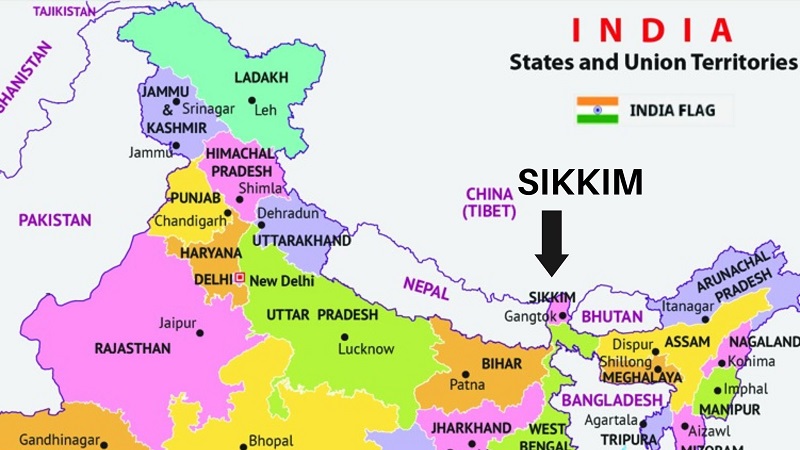
- Sikkim has become the second-largest producer of spices in the world.
- It is a multilingual and multicultural state which has achieved most of India’s environmental goals.
- It converted entirely to organic agriculture between 2003-2016 and became the first Indian state to accomplish this feat.
- The state also banned plastic water bottles and polystyrene-related products in all government ceremonies.
Language
Nepali is the dominant language while Sikkimese (Bhutia) and Lepcha are spoken in some parts as well.
The official languages of the state include English along with the three local languages. Hinduism and Buddhism are two major religions in the state.
History of Sikkim
Did you know that Sikkim was not always a part of India? In fact, at one point in the history of Sikkim, all its neighbouring countries except Tibet wanted to make it a part of them – mainly because of fertile lands in the southern region. Notably, Tibet has remained quite friendly to Sikkim throughout its journey.
A quick background
Way before any government and monarchy, Sikkim was mainly inhabited by Lepchas, the indigenous people of Sikkim who are believed to have come from the hills. They were later joined by the Magars and limbus tribes in the 16th century that belonged to an ethnic group of Kirati people in Nepal.
Historians have no definitive record of the establishment of a monarchy in the history of Sikkim. There are various interesting stories about this – the most popular one being that a prince from a royal house in Eastern Tibet named Guru Tashi had a divine revelation through his dreams that told him to travel south. He travelled south and settled in the Chumbi Valley of Sikkim during the 13th century, and five generations later, his grandson became the king of Sikkim.
Although Guru Tashi travelled to what is Sikkim today, he is not considered to be the founder of Sikkim. The kingdom of Sikkim was founded in the 17th century by his descendants – with Phuntsog Namgyal becoming the first king of Sikkim in 1642.
Tibet leads a big role in writing the history of Sikkim
As you may already know, Tibet is a Buddhist country but did you know, that there are multiple subgroups in Buddhism? There’s a tale of conflict within the most peaceful religion, the conflict that created Sikkim.
Here’s the story
In the 17 century, Tibet had a few main Buddhist sects or groups, namely the Nyingmapa sect, the followers of ancient Buddhism that wore red hats, the Kyargupa sect, and the Gelugpa sect, the one that the Dalai Lama leads also known as the “yellow hats”.
There was a lot of conflict between these sects but the yellow sect dominated Tibet and the Dalai lama sect (Gulupas) won.
The drastic turn of events — Tibetan monks became kings of Sikkim
Because of this struggle for power and the resulting dominance of the yellow sect, the followers of the red sect were forced to flee Tibet in 1641. They migrated to Sikkim and began establishing a dynasty. Their goal was to propagate their way of Buddhism and bring some kind of administrative system to Sikkim.
Then came the first king..
In 1642, Phuntsog Namgyal the fifth descendant of Guru Tashi was crowned the Chogyal (ancient rulers of Sikkim). It was the same year Dalai Lama became the spiritual head of Tibet. He sent the new king of Tibet a silk scarf and a sand image as a coronation present.
The new Chogyal was christened by the three great lamas named Lhatsun Chhenpo, Nga-dag Lama, and Kathhog Lama. Their meeting place was called the “Yuksom” meaning the place where three monks met.
But the Lepchas, the indigenous Sikkimese people, were not happy with the new Chogyal who used Tibet soldiers to silence them, and the Magars, another ethnic group from ancient Tibet moved out of Sikkim after they were defeated by the Kirati people living in Sikkim. That was just the beginning of three hundred years of monarchic history in Sikkim.
Let’s get to know the founder of Sikkim
As you now know the red sect lamas founded a dynasty in Sikkim in 1642. It came to be known as the Namgyal dynasty. The rulers of this dynasty were Buddhist priest-kings called the Chogyals. They ruled Sikkim for twelve generations. Phuntsog Namgyal was the first ever Chogyal of Sikkim, followed by his son Tensung Namgyal in 1670. He had two wives, an elder daughter, and a son.
A tale of betrayal — the Bhutan invasion
The king had a daughter with his first wife named Pendiongmu who was the rightful owner of the throne but the crown of Sikkim was passed on to Chakdor Namgyal in 1700, the son of the king’s second wife. This move outraged Pendiongmu, and she decided to out-throw her brother from power with help of Bhutan, and so the king of Bhutan ruled took over most of Sikkim from 1700 to 1706 when he was still a minor.
But once again, the good old friend Tibet stepped in. They sheltered the minor heir till he came of age. Afterward, they drove the Bhutanese away and restored his throne.
The latter rulers faced constant invasions from Nepal, another weak ruler had to flee and Tibet had to restore his son back in power until the Britishers came into the picture.
Then began the “English” history of Sikkim
Sikkim and the British became allies to drive away the Gorkha Kingdom of Nepal. This alliance outraged the Nepalese. They attacked Sikkim for vengeance and destroyed the fertile Terai lands. This led to the Anglo-Nepalese War in 1814 and stopped only after Nepal signed the Sugauli Treaty, which set up official borders between India and Nepal.
But Britishers were nobody’s friends as we all know and so the ties between Sikkim and British India strained after they began taxing places. Eventually, they seized Darjeeling and fertile Terai regions and in 1991, the British finally secured Sikkim under their jurisdiction, but allowed the existing Chogyal kings to continue their rule technically they made it a princely state.
The British tyranny
Even though the Chogyal kings were allowed to rule, they were nothing but “puppet kings” with almost no power over the matters of their own state but the British didn’t stop there. In 1986 they made Sikkim a part of a trade deal with Tibet and when the Chogyal went to negotiate with the Britishers in Calcutta, they imprisoned him and his wife.
The Chogyal king was finally released in 1895 after the British returned the ruling authority back to Sikkim. However, the officer in charge of Sikkim refused, and only let the Chogyal keep the judiciary of Sikkim. But, things became better after the Prince of Wales—the future King George V – developed a great acquaintance with the Crown Prince of Sikkim, Sidkeong Tulku in 1905 and sent him to study at Oxford University.
He returned as Chogyal to Sikkim in 1914 and Sikkim’s independence in all domestic affairs was restored, which was a monumental event in the history of Sikkim
How Sikkim became part of India
Now that’s another long chapter in the history of Sikkim. Briefly, all the rights that Sikkim regained from the British were passed on to the Indian government after India’s independence in 1947. The first prime minister of India, Jawaharlal Nehru took a vote on making Sikkim an Indian state and after it failed, he declared special protectorate status for Sikkim, which meant India would control its external defence along with diplomacy and communication.
Sikkim formed a democratic government in 1949 due to continued push from the Sikkim national congress. But the government was dissolved in just 29 days! And in December 1950, Sikkim signed the “India – Sikkim Peace Treaty”, and officially became India’s protectorate – which means a state that is controlled and protected by another.
End of 300-year-old monarchy in Sikkim
Sikkim remained in the ruling hands of the Chogyal kings until 1973 when anti-royalist riots took place in front of the Chogyal’s palace and the people of Sikkim overthrew the monarchy.
In 1975 prime minister Indira Gandhi held a referendum to make Sikkim a state of India, it was agreed upon by 97 percent of the voters.
That’s how Sikkim became a part of India after the Sikkim Parliament announced the king was deposed.
Now you know where is Sikkim located and how Sikkim Became part of India so let’s move on to some facts about Sikkim.
Facts About Sikkim
1. Largest producer of cardamom in India

Sikkim produces more than 4200 tons of cardamom annually. Notably cardamom and ginger are the cash crops of Sikkim. As the name suggests, cash crop refers to crops that are grown on a larger scale for retail (selling) purposes.
2. Sikkim has had only one royal family
Now that we have gone through the history of Sikkim we know, that the Namgyal dynasty ruled Sikkim for 12 generations and they were the only royalty Sikkim ever had.
3 Sikkim is home to the third-highest mountain peak in the world
The third-highest mountain in the world, Kanchenjunga has a height of 8,586. It lies in both India(Sikkim) and Nepal.
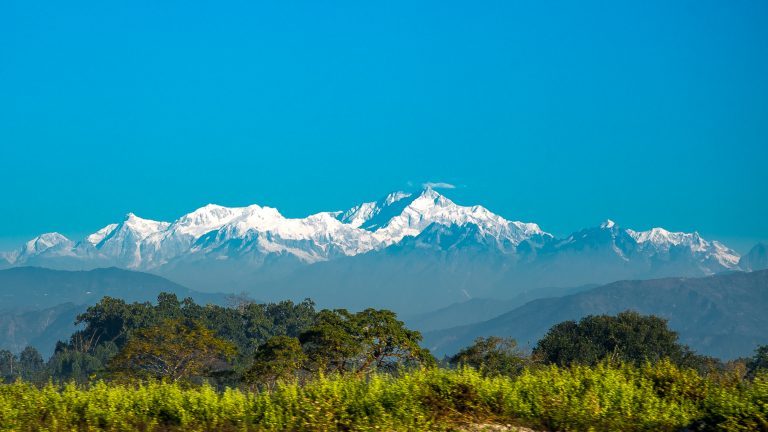
Kanchenjunga is a Himalayan mountain range that consists of 5 peaks – not one.
Its name means – “The Five Treasures of the Snow” in Tibetan.
4 Sikkim has the highest number of glaciers in India
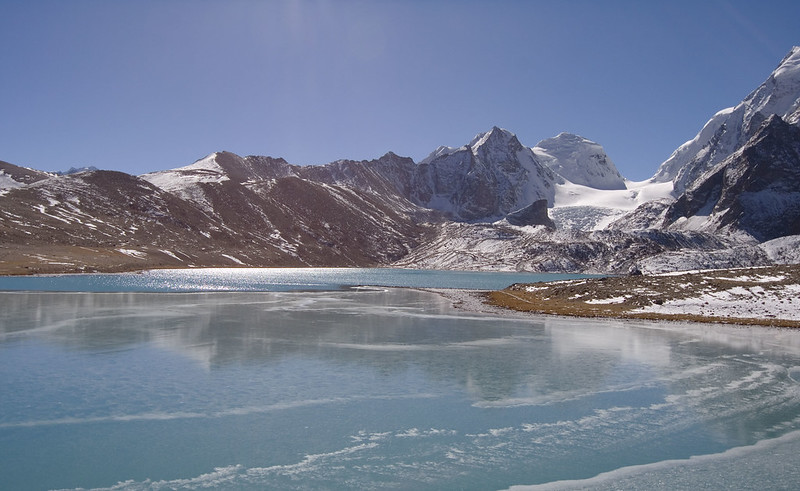
Sikkim is the most environment-conscious state in India and has around 84 glaciers – the largest among any other state or union territory of India.
5. Dalai Lama escaped to Sikkim to flee from Chinese authorities

In1959, when the Chinese authorities were looking to detain him. The current spiritual leader of Tibet, who is the 14th Dalai Lama, escaped to Sikkim to find shelter.
6. Sikkim monks have a special seat reserved in the election.
Sangha Assembly constituency reserves a seat for monks in the parliament of Sikkim, which means only monks can contest and vote for this position. Isn’t that one of the most amazing facts about Sikkim?
7. Its is one of the cleanest states in India

According to a survey by the Indian government, Sikkim was the cleanest State in India in the year 2016 and it has also been declared an open defecation-free state by the Indian government.
8. About 35 percent area of Sikkim is dedicated to a UNESCO World Heritage Site
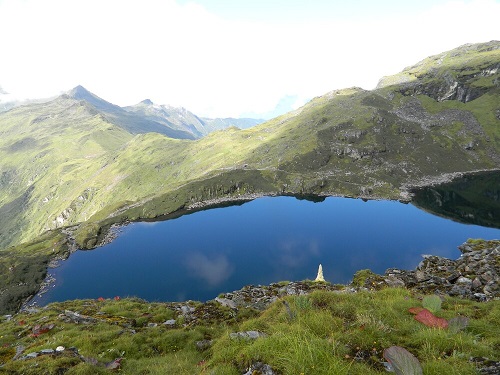
Image Credit: UNESCO
Khangchendzonga National Park, in Sikkim, was declared a UNESCO World Heritage in 2016. UNESCO – The United Nations Educational, Scientific and Cultural Organization – is a specialised agency of the United Nations that aims to promote world peace and security through international cooperation in education, arts, sciences and culture. It also recognises universally important places around the world.
9. Thangkas—paintings that keep evil at bay
Sikkim is a land of beliefs and according to folklore the Thangkas, which are traditional Buddhist paintings usually made of cotton, are believed to drive away evil spirits. That’s why they have been sacred and auspicious throughout the history of Sikkim.

10 Sikkim celebrates International Flower Day
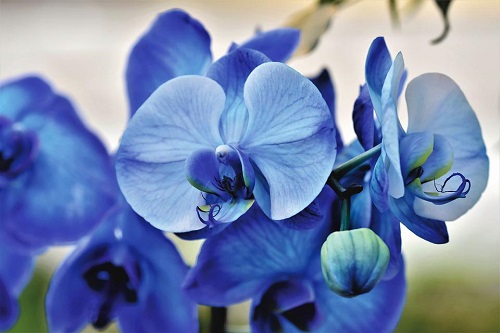
Every summer Sikkim holds a special flower festival to celebrate international flower day and to display its diverse flora. Sikkim is home to about 600 types of orchids and 240 species of trees and ferns. It holds about one–third of the total angiosperm (seed plants) present in India.
I Kid You Not now has a large readership across India and also parts of the world. If you want to write for us, you can submit your story here. You can also apply to become a news anchor. Apply here



Comments